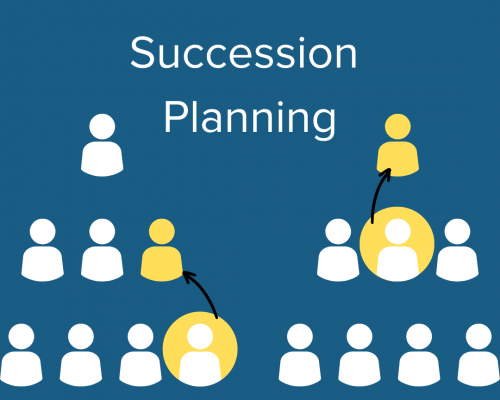Succession Planning: Why is it important and how do you get it right?

Succession planning is a vital component in the longevity and success of any organisation. It goes beyond simply having a backup plan; it’s about cultivating a culture of continuous leadership development and readiness.
This blog explores real-world examples of successful succession planning, explains the benefits of succession planning, and provides practical examples of how you can implement it within your organisation.
The succession plan of Apple, particularly during the transition from Steve Jobs to Tim Cook, stands as an example of strategic leadership continuity. Jobs’ unique vision and charisma had shaped Apple’s identity, making his departure a potentially destabilising factor. However, Apple’s meticulous succession planning, emphasising internal development, facilitated a smooth transition. Tim Cook, an integral part of Apple since 1998, was shaped for leadership, having assumed operational responsibilities during Jobs’ medical leave. This gradual transition, coupled with transparent communication and a commitment to retaining Apple’s core values, ensured stability.
Succession planning ensures leadership continuity and maintains operational and strategic course, but what else does it do?
- Preserving institutional knowledge: As noted in Harvard Business Review by Charan, Drotter, and Noel (2011), succession planning safeguards an organisation’s accumulated wisdom and expertise, preventing the loss of critical business intelligence.
- Encouragement of professional growth and development within the organisation: Burt, Knez, and Talmor (2009) observed a strong correlation between succession planning and enhanced career progression opportunities. This not only aids in employee motivation but also in building a robust internal talent pool.
- Succession planning strengthens organisational resilience: As Charan, Drotter, and Noel (2011) articulate in “The Leadership Pipeline” an organisation equipped with a well-thought-out succession plan is better prepared to navigate market fluctuations and adapt to evolving industry landscapes.
Developing and implementing an effective succession plan involves several key steps, including:
- Identify Critical Roles
Begin by identifying key positions crucial for organisational success, and outline the skills and competencies required for these roles. Understanding what makes these positions essential is the foundation of effective succession planning.
- Develop Internal Talent
Assess current employees to pinpoint potential internal successors (Refer to Tribus People’s blog ‘The talent you have’ on how to do this effectively). Focus on their development through targeted training programmes, offering clear pathways for career advancement and leadership readiness.
- Formalise the Succession Plan
Document the succession strategy, detailing the process of identifying and developing successors. Include timelines, development strategies, candidate criteria, and evaluation methods, ensuring the plan is adaptable to organisational changes.
- Maintain Open Communication
Engage in transparent communication with all stakeholders, including potential successors and current leaders. Regular discussions and feedback regarding career development and succession plans are crucial for managing expectations and aligning with organisational goals.
- Regularly Review and Update
The business landscape is dynamic; therefore, it’s vital to regularly revisit and update the succession plan. This ensures its relevance and effectiveness in aligning with evolving business strategies and talent pool changes.
Succession planning is a strategic imperative, not just a contingency plan. Senior leaders must embed succession planning into their strategic framework, recognising its critical role in ensuring leadership readiness and fostering a resilient, future-ready organisation.
Reference List
Burt, R. S., Knez, M., & Talmor, E. (2009). Professional Development and Organisational Succession Planning. Journal of Management Studies, 46(3), 461-478.
Charan, R., Drotter, S., & Noel, J. (2011). The Leadership Pipeline: How to Build the Leadership-Powered Company. Jossey-Bass.
Isaacson, W. (2011). Steve Jobs. Simon & Schuster.
McKinsey & Company. (2008). The War for Talent. McKinsey Quarterly.
Rothwell, W. J. (2010). Effective Succession Planning: Ensuring Leadership Continuity and Building Talent from Within. AMACOM.
Tichy, N. M., & Sherman, S. (1993). Control Your Destiny or Someone Else Will: How Jack Welch is Making General Electric the World’s Most Competitive Company. HarperBusiness.
SHARE: